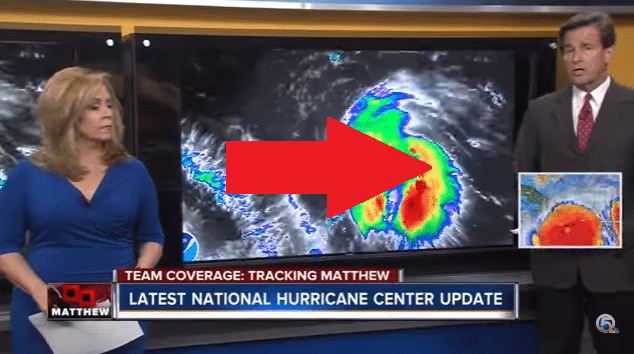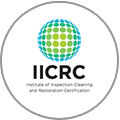I am worried.
As I sit here to write this blog my thoughts are on my family is in Hurricane Matthew’s path. My sister-in-law and nephew live in Savannah, right in Matthew’s Category 4 course. Due to my nephew’s job in the field of public service, they cannot evacuate too far from the area.
They are now setting up camp in a high-ground area about 40 minutes inland but still in a potentially dangerous area depending on Matthew’s trajectory.
When a disaster such as Hurricane Matthew seems imminent, nothing is more alarming than knowing you have family possibly in harm’s way. The helplessness you feel can be paralyzing. Yet there are steps we can take for our loved ones who are facing the possible trials of disaster recovery (flood and storm damage) ahead that will both support and be a help to them without adding to the problem.
Help Not Hinder – Tips for Long-Distance Disaster Support
Preparing Ahead – While you cannot physically be with your loved ones while they are preparing for a natural disaster, you can work to prepare ahead for the emotional concerns. Most natural disasters will have a warning issued as early as possible by the National Weather Service, Homeland Security and FEMA. Stay alert and have open conversations with those affected about the situation. Ask your family and friends to provide you with details about their disaster plans. Encourage evacuation if it is called for.
Ask about the location where they plan to evacuate to, who is evacuating, 
*If your loved ones plan to “ride out” the disaster be sure to have the address, shelter location (should things turn really bad) and the number of people staying behind; be sure to note children with ages and senior adults.
** Whether evacuating or staying in place, ask all licensed drivers to send you an electronic copy of their photo ids and up-to-date photos for everyone. Make sure to note any medical issues and medications that a family member must take.
Don’t Hit the Road! – Disaster situations stretch emergency services to the brink. Often authorities have their hands full evacuating people from the areas. Traffic jams abound. In addition, most hurricane areas have highway reversal plans in place to redirect traffic out of the areas by reversing the incoming lanes and closing roads. Don’t add to the work and confusion by rushing to the area before or immediately after a disaster.
Have a Communication Plan – Talk with your loved ones in the early days ahead and have a communication plan in place. Get contact information for everyone in the party as well as where they are staying. Close to land fall and in the immediate aftermath, communication lines may become overloaded or go down completely due to disaster damage. Give a timeframe for reporting in, 24 hours after is usually a good mark, however some systems maybe down for days or weeks if in rural areas. Try texting rather than calling as text messages seem to get out more easily in times of disaster. Don’t call repeatedly, this just adds to the problem and could bump someone off a line who is in need of emergency assistance.
Offer Shelter – While your family may be covered in terms of shelter, there are people in the areas that lack either the economic resources or have no family/friends to turn to. Use the social media grapevine to reach out to friends of friends who may know someone in this situation. Sometimes allowing strangers into your home may not be safe or feasible but if you are in a church or community group encourage them to open up facilities to become an evacuation shelter and volunteer!
Pull Together Care Packages – In these days after a disaster, clean up may be the primary focus for families in the hot zone. If you are planning to make a trip down to assist in the work. Plan to bring a care package (or more for others in the area). If you are in a church or community group this can be an ideal service project especially youth groups. Remember disaster recovery often goes on for weeks, months sometimes even years after the event.
A short list of items is listed below: 
Garbage Bags – Contractor Garbage Bags are best due to durability.
Rubber Gloves and Thick Work Gloves
Masks for Protection
Safety Goggles
Chainsaws (don’t forget the gas cans- gas can be scarce or out of service in the areas)
Waterproof (Rubber) Boots (preferably with steel toes/ insoles)
Bleach
Paper Towels
Household Cleaning Essentials (glass cleaner, dish soap, laundry detergent, furniture polish, scrub brushes, sponges, brooms, mops, etc)
Shovels
Snacks – Cleaning Teams get hungry. Having snacks in individual packs (protein bars, pretzels, crackers, bottled waters, Gatorade, etc.) available to grab and go takes the load off those affected by the disaster.
Water – Both small bottles and larger gallons (for clean up)
For more ideas visit: CDC.gov
As with most disaster restoration projects there are needs that require expert assistance. Mold- hazardous materials handling, safety concern areas and large-scale damage requiring reconstruction should always be handled by trained and certified technicians. The team at Reliable Restoration is here for your needs 24/7/365. We provide prompt response, caring assistance and assure that your disaster restoration project is done professionally meeting all industry standards. With Reliable Restoration your family is our family.







